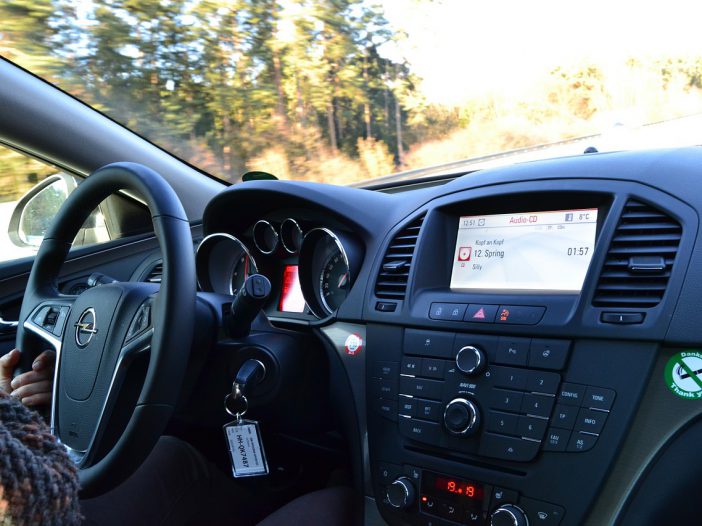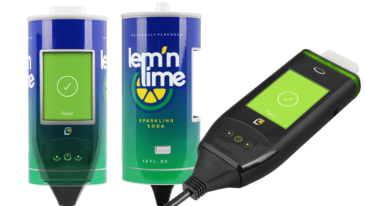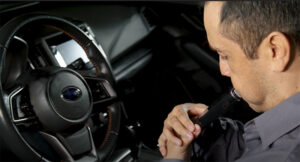
Despite some preventative tools and steps, drunk driving still remains one of the most prevalent problems in the United States. In 2016, nearly 10,500 people were killed in crashes involving alcohol impairment, which accounted for about 28 percent of all traffic-related deaths in the country that year. Over a million drivers were arrested for driving under the influence of alcohol or controlled substances in 2016.
Laws have played a large role in discouraging drunk driving and punishing those who do drive under the influence. This includes zero tolerance laws for those drivers under the legal drinking age, as well as enforcing existing 0.08 percent BAC limit laws. Tools like the ignition interlock device have also played an expansive role in preventing drunk driving.
DUI checkpoints have also become an increasingly effective tool in preventing drunk driving and reducing the chances of crashes, injuries, deaths, and damage. They are becoming much more common, but reaching a checkpoint can be intimidating to the unassuming. Let’s take a closer look at what happens at a DUI checkpoint.
What is a DUI Checkpoint?
DUI checkpoints, also known as sobriety checkpoints, are areas on streets and highways where law enforcement officers are stationed to test drivers for intoxication and impairment. As stopping every single car may not be feasible or may cause traffic or other problems, these checkpoints operate using a pattern or a sequence. For example, they may stop every third or fourth car.
Impaired driving is most common on weekends and holidays, which is when many states and counties will set up checkpoints, usually in areas surrounding bars, clubs, and other businesses that serve alcohol. You can expect to experience more DUI checkpoints late at night or early in the morning, which is generally when drinkers are most active.
Laws for DUI Checkpoints
As with most laws, laws for DUI checkpoints can vary from state to state. Sobriety checkpoints are usually used in conjunction with other elements of a larger drunk driving deterrence program. However, not all states conduct sobriety checkpoints due to issues surrounding the legality of their use. Where some states have laws authorizing the use of DUI checkpoints, others are silent on the issue or outright forbid them through legislation.
So far, 37 states, the District of Columbia, the Virgin Islands, and the Northern Mariana Islands all conduct sobriety checkpoints. That leaves 13 states that do not conduct sobriety checkpoints. Some of these states prohibit them based on direct statements within or interpretations of state law or the Constitution. For example, Texas prohibits DUI checkpoints based on the state’s interpretation of the U.S. Constitution, while Missouri, which legally authorizes and upholds sobriety checkpoints, prohibits any money from actually being spent on sobriety checkpoint programs.
What Happens at a DUI Checkpoint
If the officers only check cars at intervals, you may not even be asked to stop. If you are asked to stop, the officer will generally ask you to roll down your window and turn off your car’s engine.
They will then ask for your driver’s license, registration, and proof of car insurance. They will then ask where you are driving from and your destination. The officer will also run a background check to determine if you have any warrants.
During this initial conversation, the officer is trying to determine your level of impairment (if at all). If you have been drinking, it should be fairly obvious. Common signs of intoxication include:
- Slurred speech
- The smell of alcohol
- Red, flushed face
- A general lack of coordination or inability to focus
- Bloodshot eyes
If you show signs of intoxication or if the officer otherwise suspects that you may be drunk, you will be asked to step out of your vehicle. The officer will then conduct a series of field sobriety tests.
Standardized Field Sobriety Tests
The National Highway Traffic Safety Administration (NHTSA) has three standardized field sobriety tests. Although officers may do other field tests to check your sobriety, these are the three that will actually hold up in court and thus the tests most drivers will encounter.
Horizontal Gaze Nystagmus (HGN) Test
Nystagmus refers to any general bouncing or jerking eye movements. Horizontal gaze nystagmus is an involuntary eye movement that becomes more obvious if you have alcohol or certain controlled substances in your system. Alcohol naturally depresses the nervous system, which affects your ability to control your sideways eye movements smoothly, though this has no effect on your vision. The shaking movements become more extreme at the periphery of your eyes.
During the test, the officer will ask you to follow a pen or flashlight with just your eyes. They will move the object back and forth to look for any shakiness in your eyes, particularly at the far corners. A person without horizontal gaze nystagmus should be able to follow the object smoothly and without any jerking eye movements.
The horizontal gaze nystagmus test is considered the most accurate of the three standardized field sobriety tests, and failing it can often mean that your blood alcohol concentration is at or above the legal limit of 0.08 percent. However, there are certain prescription medications that can cause horizontal gaze nystagmus as well.
The Walk-and-Turn Test
During this test, the officer will ask you to walk in a straight line, heel to toe, taking nine steps while counting out loud. After nine steps, you must turn around by pivoting on one foot and walk nine steps back again, eventually ending where you started. You are required to keep your hands at your sides and your eyes down.
While that might not seem like much, it’s actually what’s known as a divided attention test. Drinking too much alcohol impairs your striatum, which is the part of your brain that helps you multitask. When you’re drunk, trying to divide your attention span between mental and physical tasks (like walking in a straight line, heel to toe, while counting out loud) becomes extremely difficult.
Along with your general balance and coordination, the walk-and-turn test gives the officer an idea of how good you are at following instructions. Your hippocampus is the part of your brain that plays a role in creating new memories, and as you can imagine, excess alcohol hampers your hippocampus. In other words, it’s difficult to follow instructions if you have trouble even remembering them.
As you are performing this test, the officer is looking for signs of impairment or intoxication. These include:
- Not being able to stay balanced while listening to instructions
- Beginning the test before the officer has completed giving instructions
- Stopping mid-step to regain your balance
- Failing to touch heels to toes
- Stepping off the straight line
- Using your arms to maintain balance
- Making an improper turn
- Not taking the right amount of steps
The One-Leg-Stand (OLS) Test
With the one-leg-stand test, the officer will ask you stand on one foot with the other raised about six inches off the ground while also counting out loud by thousands for 30 seconds. You have to keep your arms at your sides and your eyes looking down at your foot.
Similar to the walk-and-turn test, the one-leg-stand tests your divided attention and your general balance. Signs of impairment that the officer is looking for include:
- Swaying while balancing
- Putting your foot down before the 30 seconds is up
- Hopping to maintain your balance
- Using your arms to maintain your balance
Taken together, the horizontal gaze nystagmus, walk-and-turn, and one-leg-stand tests can help the officer accurately determine if you have been drinking.
Non-Standardized Field Sobriety Tests
Along with the three standardized tests, the officer may use other tests to further determine your level of impairment and intoxication. These may include:
- Finger to nose – The officer will ask you to stand up straight with your feet together and your eyes closed. They will then order you to touch your nose with your index finger. This is actually designed to test your balance. While you may not notice with your eyes closed, if you have been drinking, your body may sway or shake. The officer is looking for any sign of disequilibrium, body and eyelid tremors, and muscle tension. Of course, missing your nose is also a pretty obvious sign of intoxication.
- Finger tap test – The officer will ask you to hold out a hand, palm up. They will then order you to touch the tip of your thumb to each finger while counting out loud. You continue counting, forward and backward, for three sets. You fail if you can’t incorrectly, don’t touch your fingers to your thumbs, or otherwise can’t follow instructions.
- The Rhomberg Balance test – The officer will ask you to stand up straight with your eyes closed and your head tilted back. They will then ask you to silently estimate when 30 seconds has elapsed. Along with a general assessment of balance, tension, and eye tremors, the officer is testing your internal clock. If you have been drinking, time will appear to move much slower than in reality.
Other non-standardized tests may include counting backward or reciting the alphabet backward (which is generally not used as it’s difficult for even sober people).
Breathalyzer Test
From the field sobriety tests, the officer will usually have enough information to determine if you are intoxicated or not. To confirm your intoxication level, the officer will likely administer a chemical breath test using a breathalyzer. If your BAC is 0.08 or above, you will likely be arrested on the spot.
While you can choose to refuse the breathalyzer test, know that most states have implied consent laws in place. These laws state that by owning a license, you automatically consent to a breath test administered by an officer should that officer suspect you are driving under the influence. By refusing the test, you are breaking implied consent and could suffer more serious penalties.
Although stopping at a DUI checkpoint can seem confusing or intimidating, as long as you haven’t been drinking and follow the officer’s orders, everything should go smoothly.
Sources:
- https://www.cdc.gov/motorvehiclesafety/impaired_driving/impaired-drv_factsheet.html
- https://www.ghsa.org/state-laws/issues/sobriety%20checkpoints
- https://www.rearviewsafety.com/safety/happens-dui-checkpoints/
- https://dui.findlaw.com/dui-arrests/what-is-horizontal-gaze-nystagmus-hgn.html
- https://gizmodo.com/5902852/the-secrets-of-field-sobriety-tests


